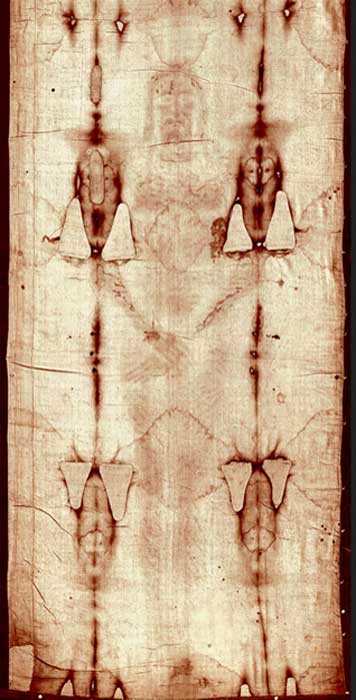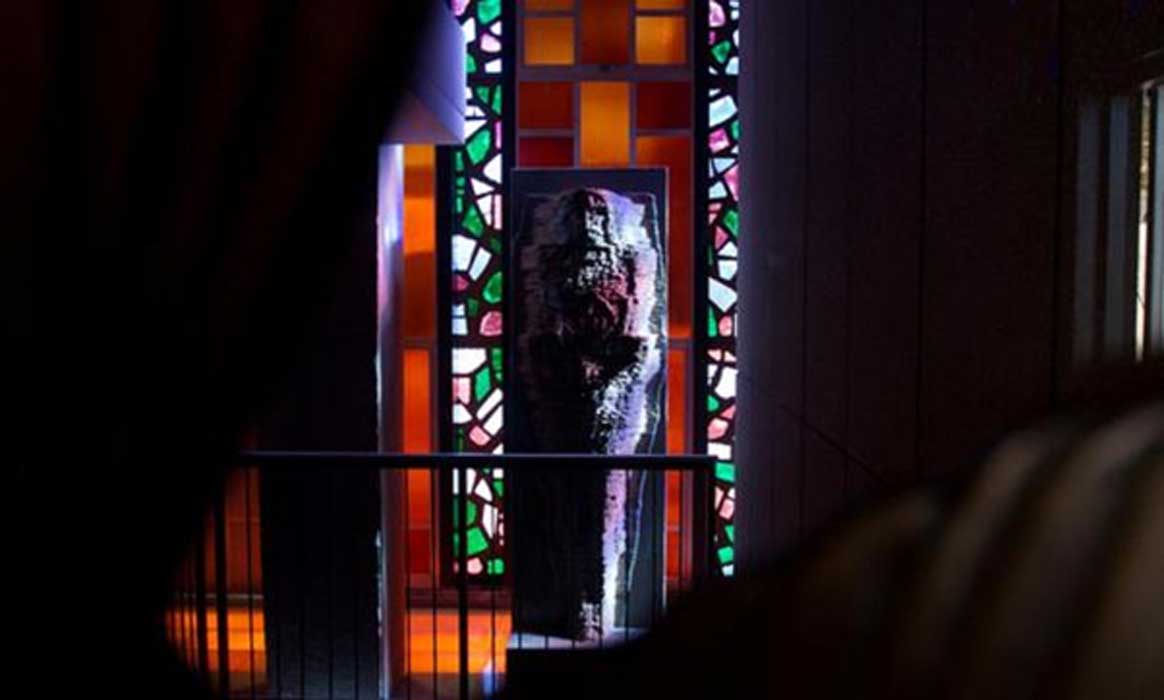Investigators use a Volunteer and Real Blood in Forensic Testing of the Shroud of Turin
It is reported in several news outlets that another test has been conducted on the controversial Shroud of Turn which indicates that it is most likely a forgery. This shroud is believed by many to be the burial shroud that Jesus Christ was wrapped in after his death by crucifixion. Forensic experts have investigated the cloth using blood-spatter techniques. This investigation adds to the research that proves that the cloth is not a genuine religious relic.
The controversial shroud
The Turin Shroud is one of the best-known relics in the Christian world. It is revered because it is associated with the death of Jesus and many believe that it even possesses miraculous powers. It must be said that the image is a pretty realistic 3-dimentional likeness of someone and that alone makes it impressive for its age. It is held by some Christians that the outline on the cloth is the image of the body of Christ, which was miraculously transposed onto the linen shroud. The image apparently shows many horrible wounds, which would be expected from a person who has been crucified. There are many stains on the cloth and it is held that these are blood stains from the wounds of Jesus.

The front side image of a man evident on the shroud with what might be blood traces on the wrist and in the side. (Public Domain)
The first record of the cloth was in the middle ages and its origin is disputed. The 4.2 meter (14-foot) shroud was owned by the Royal House of Savoy and it has been held in in the Cathedral of St John the Baptist in Turin, for centuries. It has always been a subject of debate and successive Popes have refused to believe that it was genuine. Tests from 1978 concluded that the shroud’s stains really were blood stains. However, further scientific tests on the cloth suggested that it was of medieval provenance and not from antiquity. NBC news reports that carbon-dating indicates ‘that it dates to 1260 to 1390’.
- The Shroud of Turin: Controversial Cloth Defies Explanation as Study Shows it Has DNA From Around the World
- Could ancient earthquake explain face of Jesus in Shroud of Turin?
- Religious Artifacts found alongside Bones in Attic may be Relics of a Saint

Turin shroud positive and negative displaying original color information. (CC BY-SA 3.0)
Forensic Investigation Techniques
Forensic investigators have conducted a fresh approach to examine the alleged blood stains on the shroud. Matteo Borrini of John Moores University, Liverpool in the UK and Luigi Garlaschelli, an organic scientist, decided to carry out an experiment to finally prove that the shroud is fake. They employed a forensic technique, often used in criminal cases, known as blood-spatter analysis, ‘to investigate the arm and body position necessary to yield the pattern seen on the Shroud’ reports the ScienceAlert, website.

Close up of the stains by the wrist and side of the Shroud image. (CC BY-SA 3.0)
The duo of investigators used a volunteer and applied human and synthetic blood to them in several poses over a cloth. These blood-spatter models were then compared to the alleged image of the crucified Christ on the linen cloth. They found that the blood pattern was a result of ‘someone adopting several poses’. The investigators claimed that some of the blood on the cloth fell from someone who was standing above the shroud. According to ScienceAlert this contradicts the theory that Jesus was buried in the cloth lying down.
"Even supposing possible different episodes of bleeding (e.g., movements of the body, post-mortem bleeding), these are not only non-documented, but also, as for the lumbar stains, they appear to be unrealistic," ScienceAlert reported as the researchers’ conclusion.
- Second (Or Third) Ever Skeleton with Evidence of Crucifixion Discovered
- The Tomb of Jesus Christ is Proven Older than Experts Thought
- Reconstructing Jesus: Using Science to Flesh out the Face of Religion

A copy of the Shroud of Turin. (CC BY 2.0)
The Puzzle Remains
The investigators stated that they wanted to demonstrate how forensic research can be used to solve historic puzzles. By applying criminal forensic science techniques, they argue that persuasive evidence can be provided for long standing mysteries such as the Shroud of Turin. However, the findings have been criticized by at least one forensic scientist as the blood-spatter pattern could have been a result of the transportation of a corpse in the shroud.
Borrini, who according to the Independent ‘ is himself a Catholic’ has suffered personal attacks because of the findings. He does not think that the research, which casts doubts on the historicity of the shroud, should be taken as an attack on the faith of believers. The official Church position is that the shroud is only an artistic representation of Christ and not a holy relic. The investigators have only proven what the Church teaches, that the linen shroud does not have the miraculous image of the dead Christ.
The significance of the research
The investigation, whose results have been published in the Journal of Forensic Science, shows that the Turin Shroud is almost certainly not authentic. The latest investigation indicates that it was most likely one of the many fake religious relics made in medieval Europe. It also demonstrates that forensic science methods such as blood splatter techniques can play an important role in historical investigations.
Top image: 3-dimensional model of the Shroud of Turin imprint. (Flickr/ CC BY 2.0 )
By Ed Whelan




















Comments
Shroud blood splatter test disproves nothing and is more like a guessing game test than anything. No one knows for sure what happened between the time it was placed on the body or the moments during Christs resurrection. After all, he stood over it when he had folded the shroud up neatly before leaving the tomb, thus you have 'someone standing over it'. Anyway, this test in no way eliminates or rules out all the other scientific evidences. This was like kids play and should not even be given credence. It's lame.
GreatIsThyName